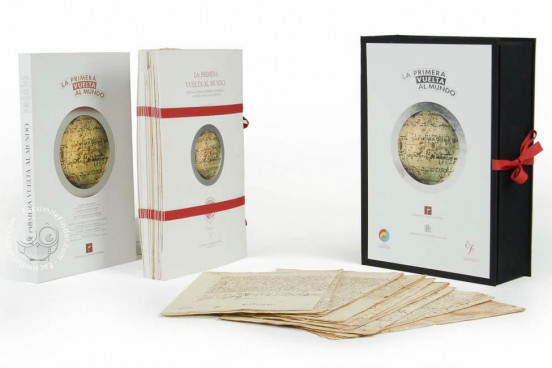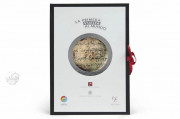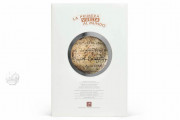It was the Portuguese who first sailed round Africa and realized Columbus' dream of reaching the Far East by sea. But this route was one which could not be used by the Spanish because in the famous Treaty of Tordesillas, it had been stipulated that the southernmost limit for navigation by Castilian vessels off the Atlantic Coast of Africa was Cape Bojador. Starting at the beginning of the 16th century, the Spanish monarchy intensified efforts to find a strait dividing continent of America which would allow passage to what would be called the Pacific and further east, the Moluccas, or Spice Islands.
The Crown assembled a flotilla of five vessels to pursue this goal and command fell to a Portuguese, Ferdinand Magellan; it was he who and went on to persuaded Spain that the project was feasible, discover at the southern tip of America the strait which would subsequently bear his name and carry on to the Moluccas, where he in fact died. It was Juan Sebastian Elcano who with just one ship, went on round the world for the first time, returning to Spain along the Portuguese route. It is proof enough of the exceptional difficulty of this crossing that only 18 men out of the 285 who had set out came back in the Victoria.
The originals documents come from three major Archive collections: the Spanish Indies Archive in Seville, the National Records Office in Simancas (Valladolid) and the Portuguese Archive in Torre do Tombo in Lisbon, where are to be found documents by Magellan before he came to Spain to offer his services to Charles V, and also documents which came from one of the Spanish expeditionary boats (captured) in the Moluccas by the Portuguese.
The last document in the collection is one written later than the events corered but in fact arising from them: the will of Juan Sebastián Elcano, which was actually written during the passage over the Pacific, shortly before the death of the great Basque navigator on his second voyage to those seas.
It is possible to follow all the stages of the expedition: the agreements between Magellan and Faleiro and the Crown, the discussions with an official of the Casa de Contratacion, appointments of the officers of the fleet, incidents arising during the launch of the ships, peace treaties with the kings of Molucca, statements by survivors about incidents during the voyage, etc. Of special scientific interest is the log kept by Francisco de Albo, recording daily the number of leagues covered, the direction and position (latitude and longitude) of the ships.
We have 1 facsimile edition of the manuscript "First Circumnavigation of the World - Magellan and Elcano (Collection)": Primera Vuelta al Mundo facsimile edition, published by Testimonio Compañía Editorial, 1998
Request Info / Price



